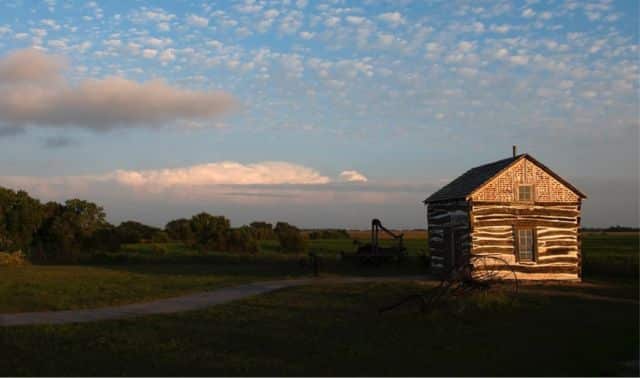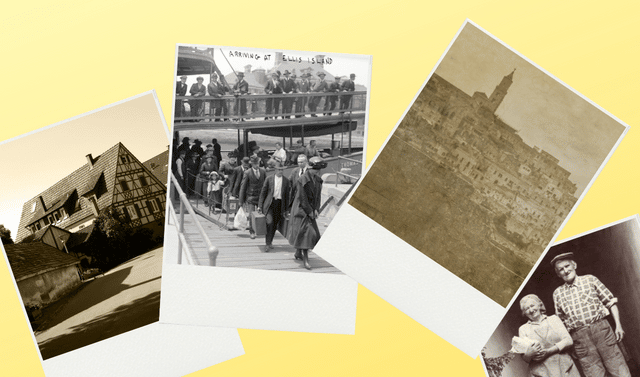
Documenting your ancestor’s life in genealogical records can seem like a game. You write to the state vital records office, they send Grandpa Ignatius Inglesnickle’s birth certificate, and, you move ahead three spaces. But the square you land on says, “The 1900 US census records for Iggy’s county are missing Skip a turn.” Before you know it, you and your blank pedigree chart are back at the starting line.
Understanding how the genealogy game works before you spin the wheel can help you bypass those discouraging research roadblocks and speed you to the family tree finish. So we’ve written this rulebook of sorts for finding the records Iggy and your other ancestors left throughout their lifetimes, from birth certificates to gravestone inscriptions. (Remember that genealogists typically research backward in time, so you won’t necessarily look for these records in chronological order.) Now it’s your turn for genealogical success — here’s what you need to know to win the game.
Birth Records
By the early 1900s, most states required counties to keep track of births. Visit Where to Write for Vital Records to learn the year your ancestral state issued this edict, contact information for the state vital-records office and instructions for requesting a copy (you may need to order older certificates from the state archives). If you’re lucky, that office will maintain an online birth-records index like Arizona’s. Even if Iggy made his earthly debut before his state’s magic date, his county may have recorded the birth — check with the county clerk’s office. Use State and Local Government on the Net to find the contact information.
Other sources of birth information include baptismal records and announcements in local newspapers, which often are available on microfilm at public, historical society and university libraries. For baptisms, contact the church your ancestor attended or, if it’s no longer around, the religious organization’s archives.
Census Records
Federal, territorial and state governments have all taken censuses to learn about Iggy and his fellow citizens. Federal censuses started in 1790 and occur every 10 years; the most recent one open to the public is the 1930 enumeration. Through 1840, federal censuses list only heads of households with tick marks for everyone else, and much of the 1890 census was lost to fire. You can search these censuses online at subscription sites Ancestry.com and Genealogy.com, or free through libraries that subscribe to HeritageQuest Online or Ancestry Library Edition. Find federal and territorial enumerations on microfilm at large public libraries, the National Archives and Records Administration (NARA) and its regional branches, and the Family History Library (FHL).
States sometimes conducted their own censuses, but with more irregularity — the state genealogical or historical society probably has a list. Check with those groups, the state archives and the FHL for records.
School Records
Even before states made formal education compulsory during the early 1900s, Iggy likely attended school at least off and on. School records include enrollment applications, report cards, roll books, yearbooks, event programs, graduation announcements and alumni lists. Scour your family papers for clues to the school your ancestor attended, then contact the main office (or the district office, if the school is no longer open) to ask where you can find old records. See if you can visit the school library to page through old yearbooks, and look for those and other records at local public libraries and historical societies. Newspapers from the era might bear graduation announcements.
Immigration Records
It’s almost certain you’ll eventually have to trace an immigrant ancestor. Before you do, you need a good guess of the person’s arrival year and the port he sailed into. Then look for microfilmed passenger lists covering the port and time period at large public libraries, the FHL, and NARA and its regional facilities, and on Ancestry.com.
Search for New York City immigrants in free indexes for Castle Garden (1820 to 1913) and Ellis Island (1892 to 1924). You’ll find other free indexes for various ports and years at sites such as the Immigrant Ships Transcribers Guild.
Voting Records
During Great-grandpa Iggy’s day, he had to be 21 years old and, depending where he lived, a property owner in order to vote. Through legislation, Congress has encouraged more Americans to participate in the electoral process: Women earned the right to vote in 1920; The Voting Rights Act of 1965 outlawed discriminatory polling-place practices such as literacy tests; the 24th Amendment passed in the 1960s eliminated poll taxes; and in 1971, the 26th Amendment lowered the legal voting age to 18.
Call your ancestral county’s board of elections to ask where old voter registration lists are kept — chances are, they’re in the local public library or historical society.
Marriage Records
With a few exceptions, US states keep tabs on marriages the same way they do births. Consult a reference guide such as The Family Tree Resource Book for Genealogists edited by Sharon DeBartolo Carmack and Erin Nevius (Family Tree Books) to find information on years of coverage and record requests.
As with birth records, county clerks and churches may have marriage records. In addition to the date and location of the marriage, newspaper engagement and wedding announcements may supply names of parents and attendants, the bride’s and groom’s occupations and their post-wedding residence.
Land Records
Research in land records is more advanced than other record types. If Iggy bought property from the US government in a public-land (sometimes called federal-land) state, search for him in the Bureau of Land Management‘s online database of federal land patents. NARA holds the original land-entry files for most states. In state-land states, where kings or other proprietors first owned the land, a state land office or the state archives would hold land records.
For either type of state, property transactions subsequent to that initial sale would be recorded at county courthouses. For more advice, see Locating Your Roots by Patricia Law Hatcher (Betterway Books).
Tax Records
In this world, nothing is certain but … oh, you know the saying. During early US history, governments taxed mainly luxury items such as windows and carriages. Counties levied property taxes next. Uncle Sam collected income taxes briefly during the Civil War, then again since the 16th Amendment legalized them in 1913. Most historical taxpayer lists are at state archives or whichever county courthouse assessed the tax. Also, some dedicated genealogist may have published tax lists from Iggy’s county in a book or on CD. Search online bookstores and library catalogs on his state or county name plus tax records.
Occupational Records
Locating paperwork from Iggy’s employer is a hit-or-miss proposition. First, find out how he earned a living by searching censuses, home sources and city directories. Akin to modern-day phone books, these directories of a town’s residents are generally available in local libraries. If his employer is still in business, ask the human resources department whether the company still has old records. Otherwise, check manuscript collections at nearby libraries, universities and historical societies. NARA may have records of a federal employee; visit National Archives at St. Louis to learn how you can get them. Organizations such as labor unions and professional associations are another good bet.
Your ancestor may have applied for a Social Security number after 1935, when Congress passed the Social Security Act. If someone reported his death to the Social Security Administration, he may be listed in the Social Security Death Index.
Military Records
Just about everyone has an ancestor who served, so records resources abound. NARA holds federal service records from the Revolutionary War through the early 20th century; thereafter, the National Personnel Records Center in St. Louis has custody. (State archives usually keep records of service in state guards and militias.) Search for names of Civil War ancestors from both sides at the Civil War Soldiers and Sailors System; many state archive Web sites also have listings of local units. In 1917, Congress obliged men ages 18 to 45 to register for the draft. NARA has the registration cards on microfilm.
Death Records
In this world nothing is certain but … oops, we already used that one, didn’t we? You can request Iggy’s death certificate from the same state and county vital-records office or archives that doles out birth records. Check historical newspapers for obituaries, which might provide names of relatives, the cemetery and the funeral home. If the home is still in business, write to ask whether it has your relatives’ records. You’ll also want to visit the cemetery, search for tombstone transcriptions at a Web site such as Interment.net, or check the FHL for microfilmed cemetery records.
Will and Probate Records
Iggy may have created records even after he passed away. If he had a will, it likely lists his heirs (which could be his descendants or other relatives) and personal property; you’ll find even more information if the will was disputed. Even if your ancestor died intestate (without a will), you may find probate records documenting the distribution of his assets. Contact his county courthouse and ask where records from the time of his death are kept — they may be in the building’s basement or at some other repository. Then you can pay a visit or write to request a search.
Congratulations! Now that you understand the genealogical version of the Game of Life, you’re well on your way to the winner’s circle.
Variety is the spice of life
It may seem like you’ll spend your whole life tracing your ancestor’s life in all the sources named here. Not true— several resources, including the ones below, let you access a wide variety of record groups. First, though, comb your home for family documents and ask relatives for information.
The Church of Jesus Christ of Latter-day Saints’ Family History Library (FHL) in Salt Lake City microfilms all kinds of papers from courthouses, state archives and other repositories around the world. No matter what type of record you’re looking for, search for it in the FHL’s online catalog: Click the Family History Library Catalog link on Family Search, select Place Search, and enter your ancestor’s town or county. In the search results, click the topic heading that fits the record you need. The FHL has branch Family History Centers (FHCs) across the country— visit one for help searching the catalog or to borrow microfilm for a small fee. Use the box on the FamilySearch home page to find a nearby FHC The Web site also has outlines for research in US states; click Guides then Research Outline for a list.
You never know what record images and transcriptions individual genealogists are posting on the Internet, so check the categorized links on Cyndi’s List and run a Google search on the type of record you’re looking for plus your ancestor’s name, county or state.
A version of this article appeared in the May 2006 issue of Family Tree Magazine.




